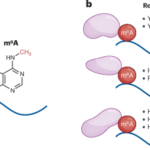In 2022, clinical trials indicated that a drug called lecanemab could slow cognitive decline in people with Alzheimer’s disease. Following the publication of these results, the global Alzheimer’s community hailed lecanemab as a groundbreaking discovery. However, closer scrutiny by independent investigators revealed that the drug might significantly benefit men, but not women.
This finding highlights a critical issue: despite significant advances in clinical applications of cutting-edge technologies like gene editing and artificial intelligence (AI), there remains a profound lack of understanding about how many aspects of human health are influenced by fundamental variables such as sex and gender.
Inclusivity in practice remains a challenge for researchers, particularly when it comes to including diverse groups in clinical trials with enough participants to identify differences between groups. Women, who make up nearly half of the population, are still underrepresented in many clinical trials, even for diseases with known prevalence among women. For smaller population groups, such as transgender people, there is insufficient data to determine what representative inclusion should look like. To address these disparities, meta-analyses that combine results from multiple studies may be necessary to tease out effects.
Advisory governing boards for pharmaceutical companies, such as the International Council for Harmonisation of Technical Requirements for Pharmaceuticals for Human Use, along with funders and regulatory agencies, can assist by ensuring that terminology is adequately and consistently defined and that populations are properly profiled.











